1906 Aurangabad, India, Revival (5 Locations)
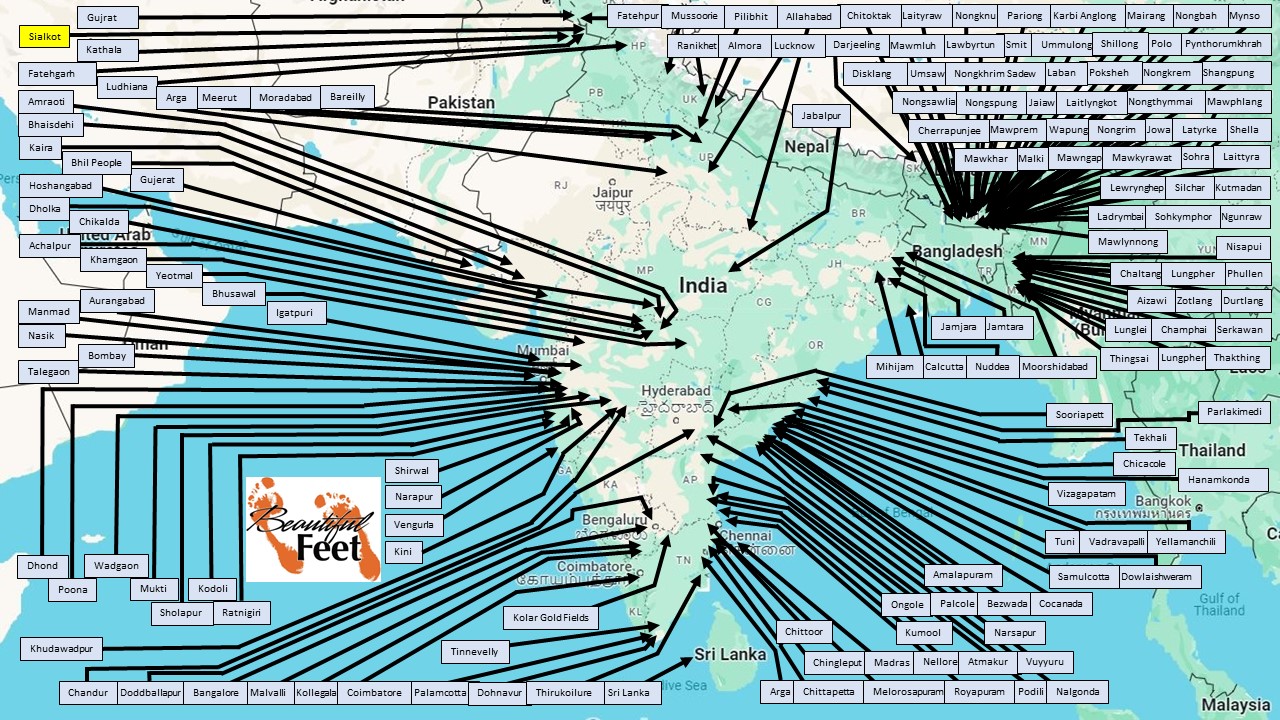
Some of the many revivals that spread across India from 1904-1906
Background to this Series of India Revivals
From 1904-1906, revival swept across India, touching every mission station and church, regardless of the denomination. Episcopalians, Presbyterians, Congregationalists, Baptists, Lutherans, Methodists, Brethren, Anglicans, Christian and Missionary Alliance, London Missionary Society, and the YMCAs and YWCAs, wherever the revival was welcome, blessings came. In addition, it fostered significant unity, breaking down previous barriers between denominations.
The 1904 Sialkot, India Revival appears to have been the spark that ignited the sweeping fires. Subsequently, upon receiving reports of the 1904-1905 Welsh Revival, prayer for revival intensified to such an extent that revival in India seemed unstoppable. The outcomes are documented in the following accounts:
- 1904 Sialkot, India Revival (Over 5 locations)
- 1905 Khasi Hills Revival (Dozens of Locations)
- 1905 Mukti Revival (5 Locations)
- 1905 Revival at Dohnavur (2 Locations)
- 1905 India Revivals I (20 Locations)
- 1905 India Revivals II (8 Locations)
- 1905 India Revivals III (5 Locations)
- 1906 India Revivals IV (10 Locations)
- 1906 India Revivals V (8 Locations)
- 1906 India Revivals VI (8 Locations)
- 1905-1906 India Revivals VII (9 Locations)
- 1905-1906 India Revivals VIII (14 Locations)
- 1906 India Revivals IX (8 Locations)
- 1906 Aurangabad, India Revival (5 Locations)
- 1906 Mizo, India Revival (13 Locations)


Introduction
This revival account shows a linking of arms between the Mukti Mission, which was a major promotor of revival in India, and the Church Mission Society located in Aurangabad.
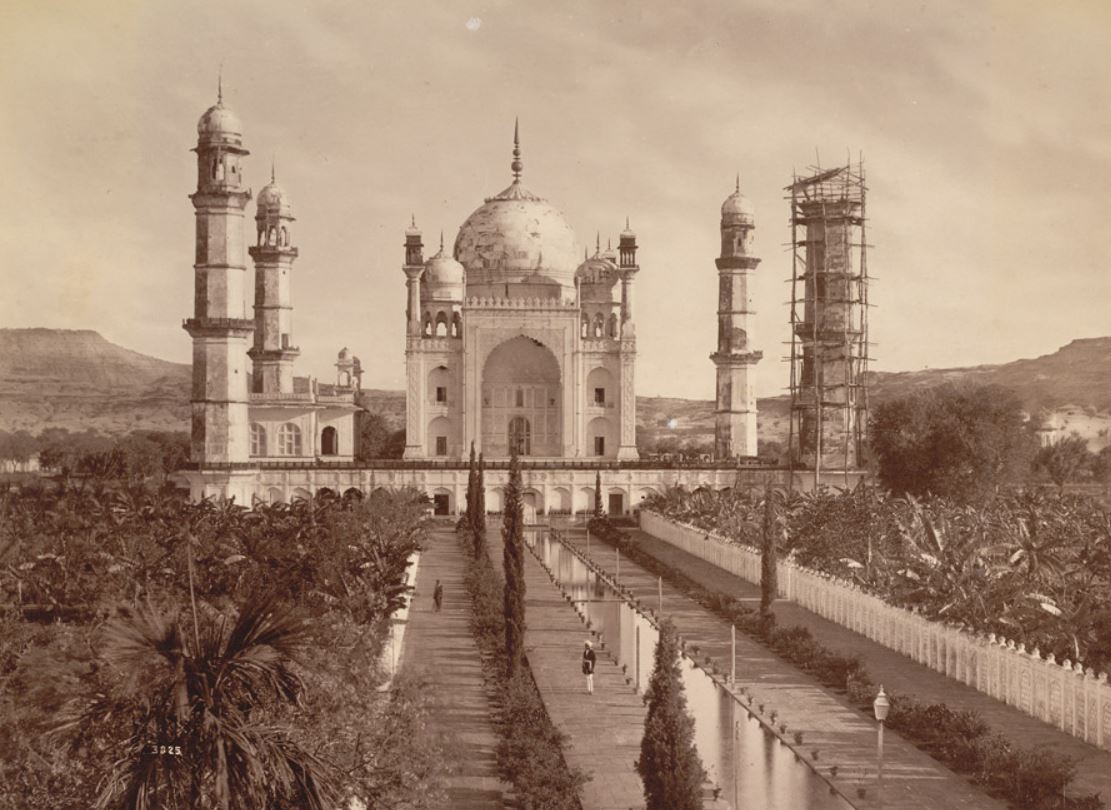
Scenery of Aurangabad in the 1880s
Famous tomb: Bibi Ka Maqbara
Revival at Aurangabad
A Church Mission Society station in Aurangabad requested a team from the Mukti Mission to come and conduct a series of meetings for them. Minnie Abrams, a missionary serving at the Mukti Mission, and who was from the American Midwest, was selected to lead the team. She had already led highly successful teams doing the same thing, resulting in revivals breaking out in many locations (1905 India Revivals II).
The meetings at Aurangabad commenced on April 17, 1906. The team accompanying Abrams was made up of one other female missionary, two young men, and 8 young ladies.
Participating in the meetings were 50 preachers and mission workers from 11 churches surrounding Aurangabad. Some of these churches were located 40 miles away from that city.
Through one of the young men on the Mukti team, the revival began among the young men of the Normal School (school for teachers).
Several days later, 16 of those students came to Abrams’ room and bombarded her with challenging questions from the Bible. Having satisfactorily answered their questions, the next day when they came, they didn’t want to ask questions, they wanted to seek the baptism of the Holy Spirit.
In a short period of time these young men experienced the convicting power of the Holy Spirit and they couldn’t rest or sleep until they publicly confessed their sins.
Because of their passion for Christ, this group of young men came daily to Abram’s room for special instructions and prayer. When they returned to their dorms at night they would spend more time in simultaneous prayer (everyone praying at the same time). This led to persecution from the supervisor of the dorm, as he used a whip to try and stop their praying so late at night. The young men remained persistent, however, and ultimately the dorm supervisor became convicted of his sins and that barrier to the revival’s momentum was removed.

National Indian preachers associated with the Church Mission Society
Opposition from Preachers
The Indian preachers from the surrounding area who were participating in the meetings were evidently uncomfortable with some of the practices of the Mukti team. They were concerned that the team was trying to change their order of conducting worship services. Some of the things they expressed objections to were:
► The practice of simultaneously praying out loud (everybody praying at the same time).
► Praying without using a prayer book.
► Manifestations of the Holy Spirit.
► Public confessions of sin.
► Women preachers / teachers (Minnie Abrams preached everywhere she went).
The meetings at Aurangabad were scheduled to continue for 10 days, but they went on for 48! The missionary in charge permitted this extension because he wanted this revival blessing for every one of the people at the mission station.
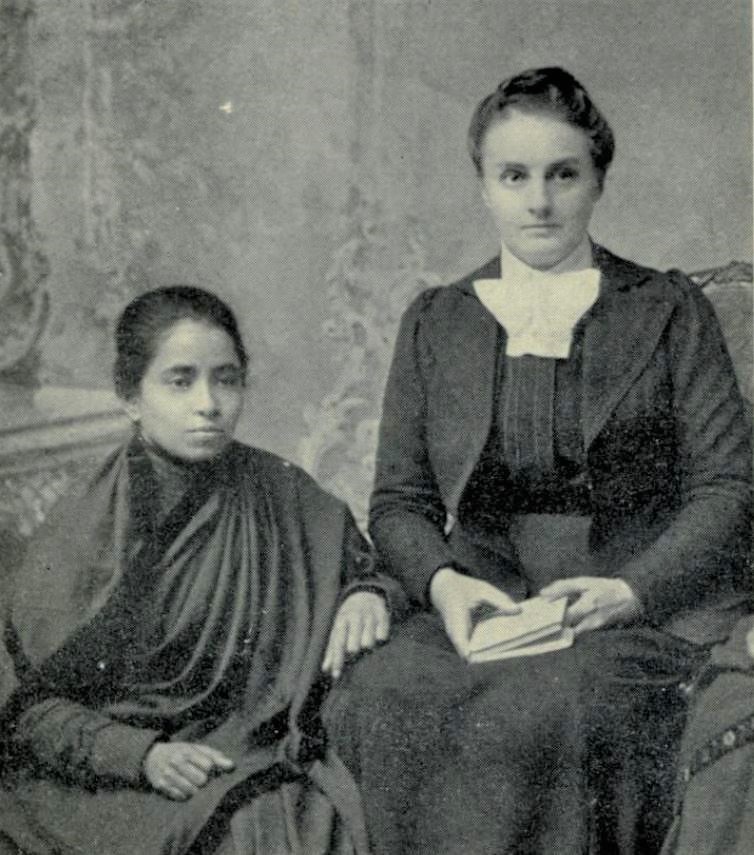
Jivubai (left), a co-worker, with Minnie Abrams (right)
Children and the Revival
As children at the school were witnessed praying with tremendous intensity, it was an additional confirmation that what they were seeing was God at work. All of what was occurring led some of the preachers and workers from the region to discover that they had never been born again. When these people understood the truth about their spiritual condition, they yielded their lives to Jesus. From that point on the meetings grew in power.
Sometimes, after closing the nightly meeting, it would restart; the Holy Spirit evidently had not finished what he wanted to do. The longest meeting was one that began at 9 a.m. and continued till midnight.
Unbearable Heat
Aurangabad at that time was considered the second hottest city in India, with the temperature on some days reaching 109 degrees in the shade. Even with it being so hot, those present in the meetings were so occupied with God that nothing could distract them from their focus on Him. Not even the man continually walking through the meeting room passing out drinking water distracted the worshippers. To have the physical strength to endure the heat was evidence that God was empowering them to endure the long days of prayer and worship, and at the same time, continue on with little sleep.
Miracles at Aurangabad
There were miracles that followed the Mukti team’s ministry in Aurangabad. As they would travel around the area in small groups, ministering to people in homes, they encountered a family that said they would come to the meetings, but their little girl was dying, so they couldn’t leave her. They said that if the team could make her well they would come to the meetings.
After that home visit the young men of the Normal School began agonizing in prayer for the life of that dying girl, and in response to their prayers, the girl was healed. The parents then, with their healed child, came to the meetings. Several other miracles of a similar nature were also reported.
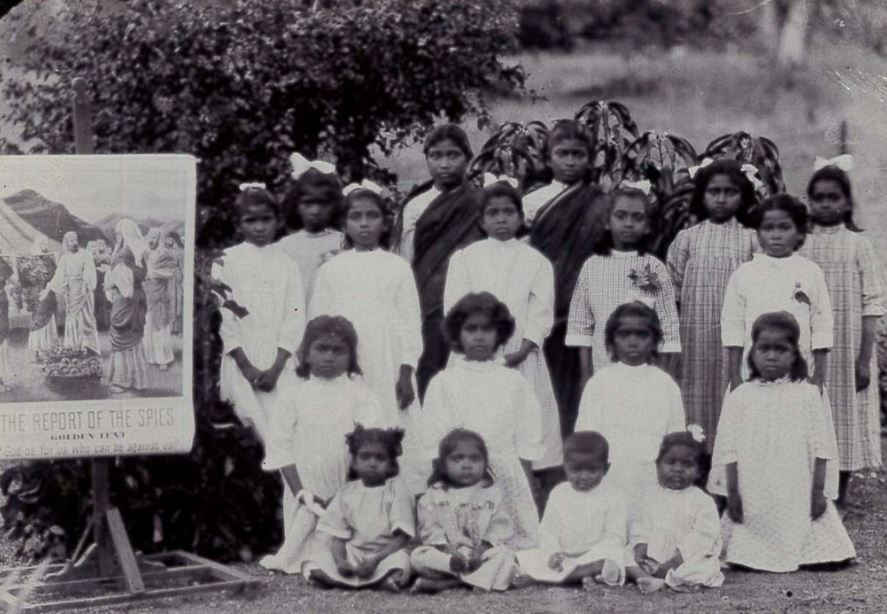
Girls at orphanage c. 1900
Eleven Locations Receive the Revival’s Blessing
The 50 pastors and workers who came to be part of the meetings in Aurangabad came from 11 different churches. It was to those churches, in surrounding villages and towns up to 40 miles away, that teams from Aurangabad were sent to conduct meetings.
The leader of one of the teams was a pastor who was so seriously in debt that many thought he was unfit to lead an evangelistic team. The man genuinely repented and was making efforts in the repayment of his debts, and because of that, the Lord honored him with a powerful evangelistic anointing, leading to great success in the meetings that were held in area churches.
As that pastor and his team were traveling and holding meetings, the Mukti team, as well as others from the Normal School who remained in Aurangabad, sensed a heavy responsibility to pray for the traveling ministry teams. So intense was this burden that they could not sleep at night.
As these intercessors remained at their job, and as the teams were traveling about, there came an outpouring of the Holy Spirit on the other churches that exceeded the outpouring that was experienced at Aurangabad.
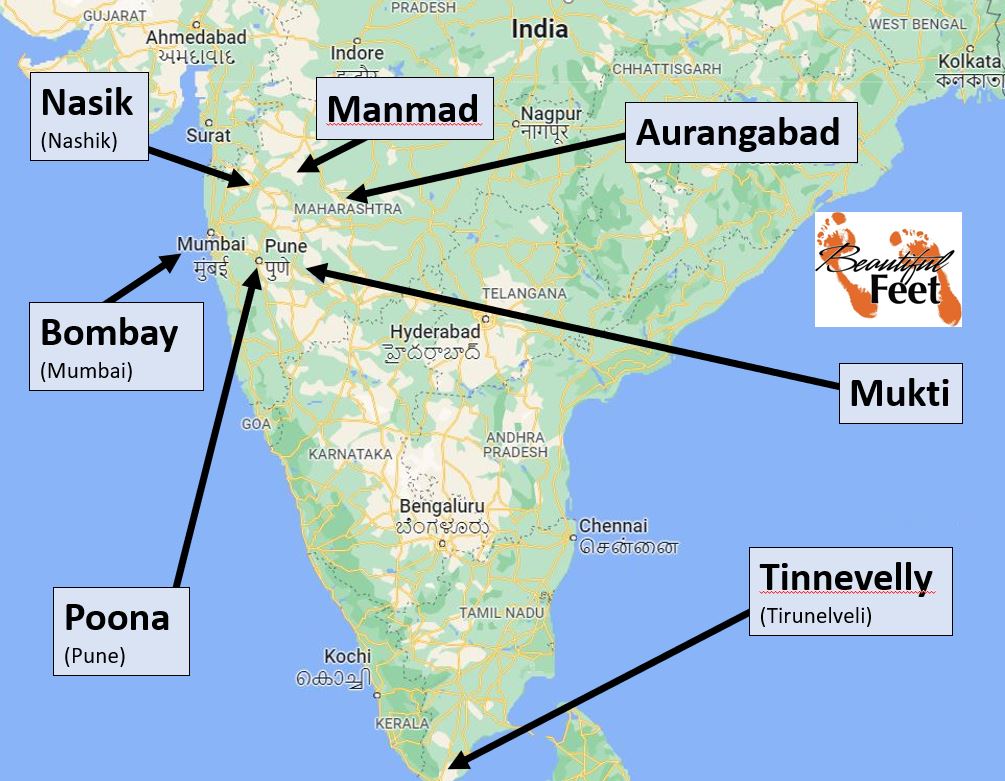
Locations mentioned in this revival account
Revival at Manmad
The pastor of the church in Aurangabad had a daughter who was a teacher in a girls’ school in Manmad. When the schools were closed during the hot season, that pastor’s daughter was home in Aurangabad while the revival was underway.
When the school season started again, the pastor’s daughter returned to her school in Manmad. Upon her arrival she assembled the girls and held three meetings with them on the first day of her return. They prayed until the Holy Spirit’s conviction of sin came. This led to many of the students confessing their sins, and then they experienced tremendous joy when they knew their sins were forgiven.
Police Called
The noise of the praying and crying was so loud at the school that the police from the village were called to find out what was wrong.
What they found was sins being confessed and exuberant joy. This celebration of freedom was demonstrated with “laughing, clapping, and sometimes dancing.”
At this same time “many received the spirit of prayer and began to intercede for others, shaking and trembling in every limb while prayer was going on, yet able to sit quiet and composed while God’s Word was read and addresses given.”
This “spirit of prayer” even came upon the little girls. A couple of these young girls, after receiving an outpouring of the Holy Spirit, were used by the Lord to give exhortations that made dramatic impressions on the listeners.
Meetings at this time lasted for many hours, with “prayer, confession, praise, succeeding each other without intermission, even for twelve hours on end.”
There were more than 50 girls and widows who received this “spirit of prayer, and literally spent hours a day agonizing for others, with some having trances and visions.”
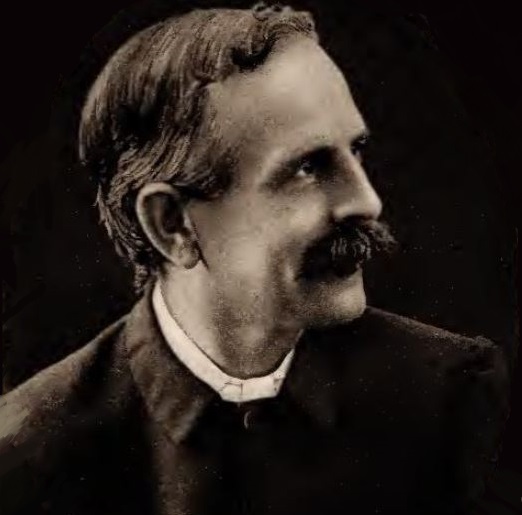
Thomas Walker (Walker of Tinnevelly): English missionary
Report on the Revival in Manmad
Writing about the girl’s school in Manmad, the Rev. L. B. Butcher, of the Church Mission Society, wrote,
Missionaries had for months been praying for Revival and had had a foretaste of blessing in connection with meetings held by Rev. T. Walker, of Tinnevelly, the previous December, where several girls…were truly converted. One of these was the pupil teacher who was at Aurangabad [mentioned above].
Revival at Manmad Continues
General meetings were held at Manmad during the month of August 1906. Indian workers from the surrounding areas were invited to come and participate. When the school in Manmad was closed, helpers came from Aurangabad to help with meetings. There was also a team of intercessors from Mukti that came to assist. That team was led by Manoramabai, Pandita Ramabai’s daughter. These intercessors stayed in Manmad about 6 weeks, and then returned to Mukti.
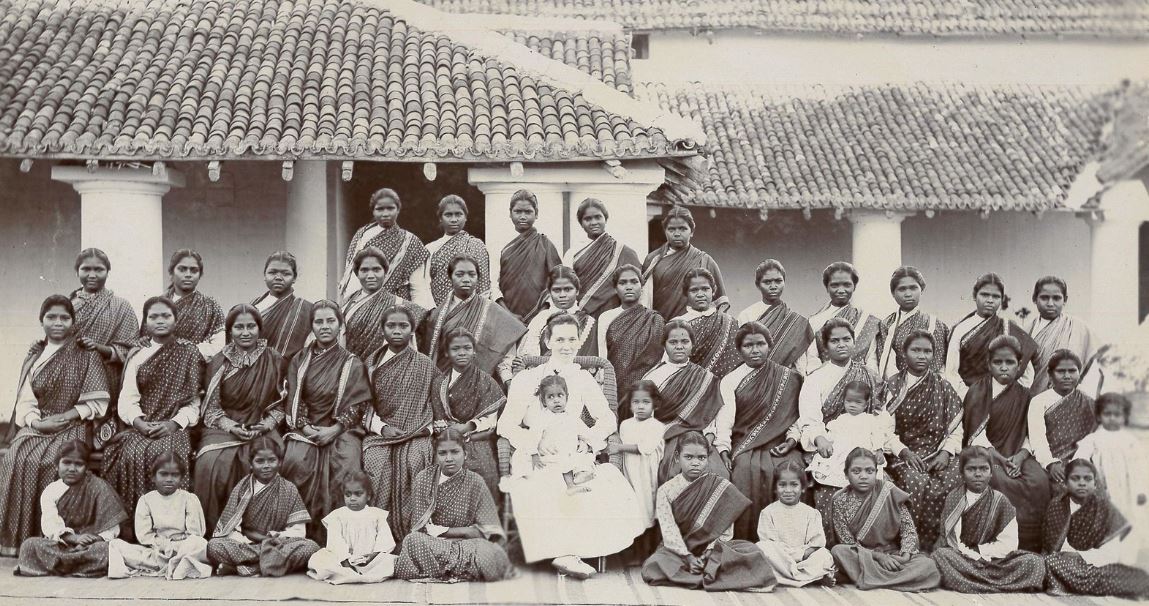
Girls’ orphanage c. 1908
Children Spread Revival to Nasik and Bombay
During the hot season schools close and children return to their villages to live with their parents. This led to many children being home in Aurangabad when the revival occurred there. The schools some of these children attended were in Manmad, Nasik, and Bombay.
Minnie Abrams indicated that the churches and mission stations in Bombay had heard of the spreading revival during 1905 but were not wanting it for their location. They were evidently in opposition to the Pentecostal features that were associated with the revival.
Despite the Bombay missionary and church leaders’ rejection of the revival, God used a 9-year-old schoolgirl, returning from Aurangabad, to start the revival there.
When this young girl returned to her school, she invited other girls to pray with her for an outpouring of the Holy Spirit. Soon the entire school was praying, and even the female supervisor of the school received a blessing from the Lord. The news then went out that revival had come to Bombay through a young girl. This caused an increase in prayer meetings in all the churches and mission stations in Bombay.
Revival at the Church Mission Society School in Bombay
The revival at the Church Mission Society’s girls’ school in Bombay had the following features:
► Prayer meetings were held many times throughout the day, and at times far into the night.
► The girls would sometimes go without food, unwilling to stop their prayers to eat.
► Prostrations (slain in the spirit) were common. When these girls were resting unconscious, clearly under the influence of the Holy Spirit, external stimuli, like a spoken word, or a touch, had no effect upon them. They were unaware of everything around them.
► Missionaries that were observing what was happening were all convinced that it was of God and stayed out of the way to let the Holy Spirit do what He wanted to do.
► Missionaries were not only supportive of what God was doing, but they also set their work temporarily to the side and sought God alongside everyone else. They wanted this blessing for themselves, “even if they had strange signs as well, willing to be made fools for Christ’s sake.”
The local Marathi Christians, along with their pastor, were invited to attend the meetings. The pastor was elated with the work God was doing, as he saw his people confessing sin and being baptized in the Holy Spirit. He even witnessed two catechists (lay-teachers of Bible doctrine) confessing pride. One of them was of the Brahmin caste.
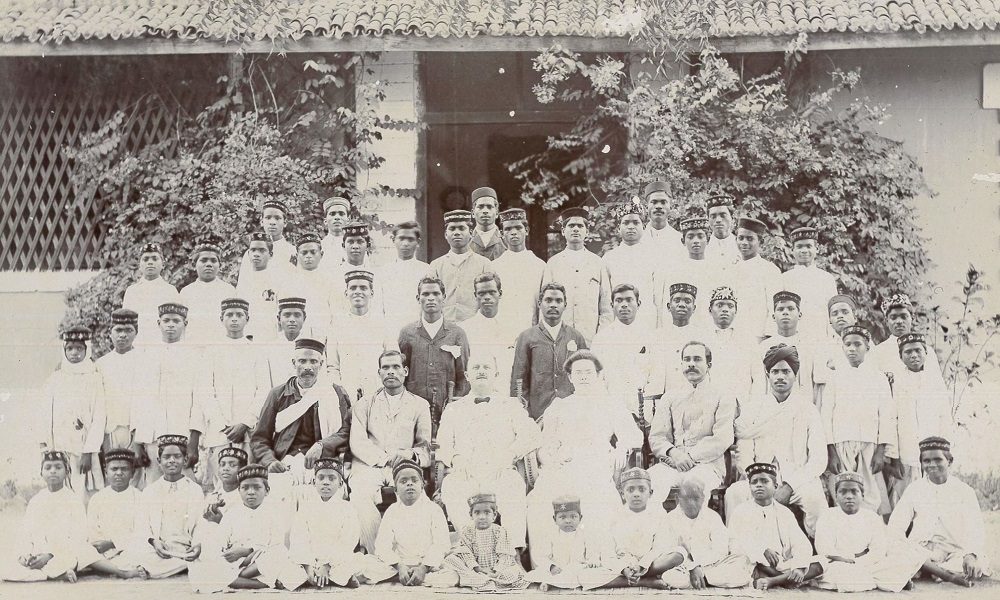
Boys’ orphanage c.1908
Sailor Hears of the Revival at Bombay
A sailor on one of the ships in the Bombay harbor heard of the revival at the girls’ school, and after finding his way to the school, he asked for prayer; he was under tremendous conviction of sin. The children were then called, and surrounding him while they knelt, they began to pray. Though the sailor couldn’t understand the Marathi language the children were using, their prayers melted his heart, and the burden of his sins was lifted. He was then able to return to his ship a changed man.
Gift of Discernment
At the Church Mission Society’s girls’ school some fruit was stolen from a room, and one of the Spirit-filled girls was accused of the theft. It was evident that Satan was attempting to discredit what God was doing in their midst. That girl denied stealing the fruit, so the teacher called the girls together and asked who took the fruit, but no one confessed.
The teacher then said, “We must ask God to show us who has done this,” and they all began to pray.
As they were praying, two of the girls were slain in the Spirit, unconscious to all that was occurring around them. Eventually one of the two came back to consciousness and went to the teacher and whispered, “God has told me who stole the fruit.”
A little bit later the second girl regained consciousness, and going to the teacher, whispered the same name. The teacher then asked the group for confession, but when no one confessed, she mentioned the name of the child God revealed. At first that child denied her guilt, but she eventually confessed.
Later Reports on the Revival in Bombay
After the revival in Bombay had continued for a period of time, there were reports that its effect was lasting:
► There were accounts of the “spirit of prayer increasing in missionary circles.”
► There was a warmth and unity previously not known.
► There were two special prayer meetings held weekly, one of them being at the Y.M.C.A., and the other at the Y.W.C.A. There were also the usual Church Mission Society prayer meetings that continued.
Report on the Revival in Poona (Pune)
A female missionary speaking at a conference of the Christian Women Workers’ Union at Poona, in September 1906, said that every girl in the Poona school:
► Had confessed Christ.
► Found the Bible to become like a new book, which they loved reading and studying.
Sources
► Revival in India by Helen S. Dyer
► Walker of Tinnevelly by Amy Wilson-Carmichael
Return to List of Revival Stories
Chet & Phyllis Swearingen:
Office: (260) 920-8248
romans1015@outlook.com
Beautiful Feet
P.O. Box 915
Auburn, IN 46706

